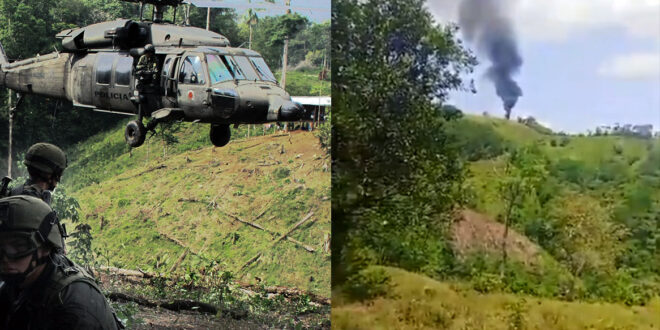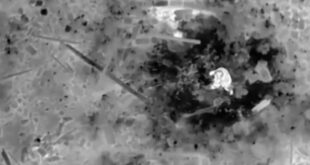Why I’m more focused on the bombs that didn’t explode
COMMENTARY by Susan Katz Keating
At least 19 people are dead in Colombia, and more than 70 are wounded, after dissident guerrillas staged twin attacks on Thursday. A Black Hawk helicopter was brought down with a drone. A truck bomb ripped into the gates of an air base in Cali.
But I’m more focused on the bombs that didn’t explode. On the second truck bomb that failed to detonate.
Authorities said that while one truck wreaked havoc, a second truck, also packed with cylinder bombs, didn’t go off. On the surface, this looks like luck. In reality, it’s proof of a growing danger: Colombia is dealing with a DIY terror shop – garage-floor bomb labs run by apprentices.
Authorities blamed the attacks on dissidents of the defunct Revolutionary Armed Forces of Colombia (FARC). That’s the political part.
The explosions in Cali tell another kind of story.
At 12:50 p.m., a truck packed with improvised cylinder bombs went off outside the Marco Fidel Suárez Air Force Base. It exploded in one of the busiest areas of the city, surrounded by retail outlets, supermarkets, and a DollarCity discount store that took heavy damage. Six civilians were killed on the spot, including a nine-year-old child walking near the base. Dozens more were shredded by shrapnel while shopping.
But a second truck was parked nearby, primed to explode. It didn’t.
Without seeing the labs or the reports, my first take is that some combination of three scenarios are in play. The bombs came from different labs; were assembled by separate teams; or were built with unreliable timers.
If the bombs came from different labs, the mix might vary in volatility or stability. If they were assembled by different teams, skill levels could differ dramatically. And if the timers are unreliable, the bombs themselves might fail in the moment, but still have a mind of their own – primed to explode where the bombers never meant them to.
These bombs are rogue weapons. They can kill in ways the bombers never intended – even inside the garage-floor labs where amateur operators tinker with wiring, detonators, power sources, and the like. On key element is the timing device. Every unstable timer is a ticking threat, capable of detonating unexpectedly.
I reached out on Friday to a veteran operative who once spent a considerable amount of time among the FARC guerrillas. He was alleged to be a high ranking member of the Provisional Irish Republican Army’s engineering department – its overall bomb shop. He was convicted in Colombia and sentenced in 2004 to 17 years in prison for allegedly teaching FARC operatives how to make explosives. He and his companions denied wrongdoing, and managed to escape Colombia and return to Ireland ahead of an Interpol pursuit squad. His innocence notwithstanding, I thought he might have insights into today’s events outside the Colombian air base. I asked what he made of the bombs, their components, the failures, and the tactics.
He didn’t respond.
Here’s what we do know: the FARC dissidents are evolving. The drone strike on the Black Hawk in Antioquia was deliberate, and lethal. It worked. The twin truck bombs in Cali were deliberate, too. For now, results are mixed. But every botched job is a lesson. Each dud is a classroom tutorial. Today’s bomb amateurs are tomorrow’s artisans.
In 1984, the IRA tried to kill Margaret Thatcher. They missed. Afterwards, they released a statement: “We have only to be lucky once. You will have to be lucky always.”
Once this latest incarnation of post-FARC bombers perfect their craft, there will be no more lucky breaks, even half-breaks like what happened in Cali. And they will become the next generation of tutors.
Susan Katz Keating is the publisher and editor in chief at Soldier of Fortune.

 Soldier of Fortune Magazine The Journal of Professional Adventurers
Soldier of Fortune Magazine The Journal of Professional Adventurers






